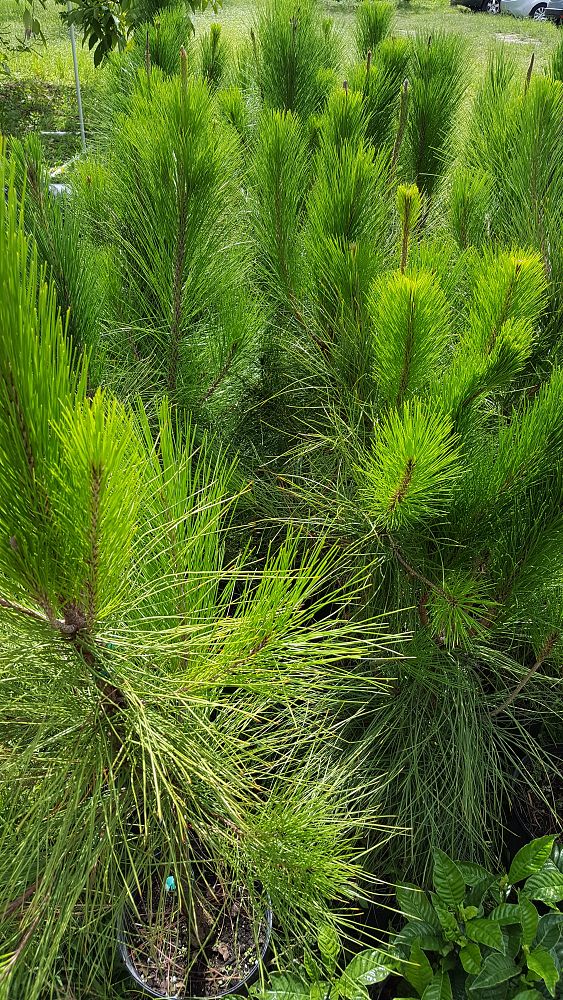
Reddish-brown, deeply furrowed, epicormic sprouting is common Small, short, sharp, often fall before mature Stout and rough, needles very crowded at tipsīrownish-red, flat, often short shoots on trunk Small, sharp, reflexed toward base, persistent Tapering, slightly curved, fall soon after seed drop


Gray to reddish-brown, deeply furrowed, scaly Short, stout, sharp, pointing toward base, very persistent Pine Tree Species Namesģ to 9 inches straight or slightly twisted Differentiating Features of Pines in South Carolina. Refer to Table 1 below for the identifying features to differentiate all 10 pine species found in South Carolina. Unfortunately, variations in coloring, shape, thickness, etc., can make this very difficult, but with time and experience, these clues will become useful in making an overall determination. Oftentimes, the only easily examined part of the tree is the bark. To differentiate between the two, note that longleaf pine twigs remain “thumb-sized” to the tip whereas slash pines decrease rapidly in diameter as they approach the ends more similarly to loblolly pine. Both longleaf and slash pines tend to have large groups of needles near the ends of the twigs. Examining the twigs or branching features is another useful tool. When looking at a mature tree, you may be able to view needles from the ground but be aware the needles you find may be from other pines nearby. No matter the species, a handy first clue is the number of needles per fascicle. They do not self-prune, are rarely found over 50ft tall, and tend to be found in groups in the forest or open areas. If grown in the open, Virginia pine will take on a shrubby appearance. The cones are also small at 1.5 to 3 inches long with pronounced prickles that resemble a “needle-like” spine on each scale. Virginia pine needles are dark yellow-green and are twisted and found in fascicles of 2 that are 1.5 to 3 inches long. Virginia Pine ( Pinus virginiana) is not a commercially important species due to its less than desirable growth characteristics compared to our other pines. Moore Herbarium, University of South Carolina. These white buds are often referred to as “candles” or “candling.” During the Spring of each year, it is easy to identify longleaf pine by their white fuzzy terminal buds extending from the tips of twigs before new needles begin to emerge. These growth adaptations are in response to frequent fire and made in an effort to get its terminal bud out of danger as well as above competing vegetation following a fire event. This growth stage can last several years before the tree shoots up several feet in one growing season. This is the only species in SC that exhibits a grass stage when young. This species is highly adapted to growing on poor sites which are often sandy in nature and prone to the occurrence of fire. The bark of longleaf pine is often very thick compared to other species with an orange-brown appearance.

Cones are 6 to 10 inches long with prickles bending downwards to the base of the cone. Bare twigs are very stout and often referred to as “thumb-size” and have a rough surface left behind by previously dropped needles. Longleaf pine needles are grown in fascicles of 3 and can reach up to 18 inches in length, lending to its namesake, but are typically 8 to 12 inches long. Longleaf Pine ( Pinus palustris) once covered much of the land in SC but was heavily harvested by early settlers. Slash Pines can easily live past 200 years, and there are many that old in Collier County.Longleaf Pine. In DeLotells’ graph of his data, DBH is the Diameter at Breast Height. The R-squared values show how well the line fits the data points. R-squared ranges between 0 and 1 with the higher number showing the line is a good fit for the data. In the field, biologists use a different indicator of an “old” pine tree: a flat top shape to the pine canopy. “average” line in the graph, so a tree’s diameter in DeLotell’s graph below may not tell the precise age. Note the variations between the individual dots and the Slash Pines grow a little larger in the drier pine/palmetto forests (mesic flatwoods) than in the wetter pine/grass forests (hydric flatwoods), and there is a good deal of difference between individual trees. It comes from coring pines in the woodpecker’s habitat in Picayune Strand in Collier County. However, Roy DeLotelle, a researcher for Red-cockaded Woodpecker habitat in Collier County, has collected data on the age of pine trees important for the woodpeckers. Q: How old are the bigger slash pine trees?Ī: Slash Pine in South Florida lacks data, probably because there is not a local lumber industry.


 0 kommentar(er)
0 kommentar(er)
